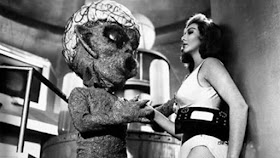By Doug Gibson
I finally got a chance, via YouTube, to see the infamous "The Last Movie," the 1971 Universal bomb that starred directed Dennis Hopper. I'd always wanted to see it after reading about it almost 30 years ago in the Medved brothers book, "The 50 Worst Films of All Time." The film, which barely got a VHS release and has never been released on DVD, damaged Hopper's career for about 15 years.
Although, there is a small contingent of film fans who claim "The Last Movie" is a misunderstood genius, don't believe it. It's an incomprehensible, pretentious, expensive ego trip for the star, who had become a hot property due to "Easy Rider." Given $1 million by Universal to make a film, Hopper and many friends, hopped to a small town in rural Peru and shot a film. Purposely not shot in sequence (one waits almost 30 minutes before the title "The Last Movie" is shown, it stars Hopper as "Kansas," a stunt man for a Hollywood western film production. Kansas is shacked up with the town whore and decides to stay after the western filmmakers go home.
At this point, locals, egged on by a Catholic priest who hates Kansas and the others western film people, decide to make their own film. They use fake cameras (made of wood) and worse, real weapons and violence, that kill and main people. The priest blames Kansas, and he's wounded and on the run from the filmmaker villagers, who want to finish the film with Kansas as the villain.
This sounds mildly interesting but the film is shot out of sequence and with little coherence. The film "begins" with a wounded Kansas being hunted by villagers ... and so on, back and forth. At one point, the plot goes away and Kansas and a buddy visit a degenerate couple with plans to invest in a mine. The degenerate is played by Julie Adams, star of Creature of the Black Lagoon and once a girlfriend to "Andy Taylor" in The Andy Griffith Show. She's very fetching as a 40sh trophy wife but her performance is so bad it has to be seen to fully comprehend how bad it is. As poor as Hopper is in the film, Adams is beyond belief. The film has a couple of "erotic" scenes, including a voyeuristic one involving staged lesbianism.
The rest of the film flies back and forth sequentially. At one point is seems to settle with a climax of Hopper facing death in the villagers' "film," but then everything goes out the window and we're subject to what looks like outtakes from director Hopper. Then the film just ends, and the people of Chinchero, Peru are eventually thanked. ...
The backstory of the film is more interesting. As mentioned, Hopper was provided a million plus to make the film from Universal execs, who did not oversee the filmmaking. There are rumors, and from viewing the film I'd tend to agree, that drug use was frequent on the set. Apparently, Hopper did prepare a conventional, sequential version of a film. However, it was mocked by "El Topo" director Alejandro Jodorowsky, and Hopper, humiliated, tore apart the film and attempted to make a "deep" "metaphysical" "spiritual" incomprehensible adaptation that allegedly poked fun at materialism. Some of the co-stars include Adams, Tomas Milian, Sylvia Miles, Peter Fonda, John Phillip Law, James Mitchum, Dean Stockwell, Michelle Phillips, Russ Tamblyn and Kris Kristofferson, who sings.
The film horrified Universal execs. Despite winning a minor award at a Eiropean film festival, after it played in NYC, LA and a few other major cities, it was dumped into general release as a second or third feature on the drive in circuit, often titled "Chinchero." The film bombed, Hopper's career was harmed. Defiantly, he took the film on the road during the 70s, showing it on college campuses. After Hopper's career returned, he regained rights and before his death spoke of getting a DVD release. That never happened, although I'm sure one day there will be an art house label DVD release. When that occurs, don't expect much, but it's worth a peek just to experience the pretentious banality. Maybe it will pop up on TCM Underground some day. Watch the trailer above.


